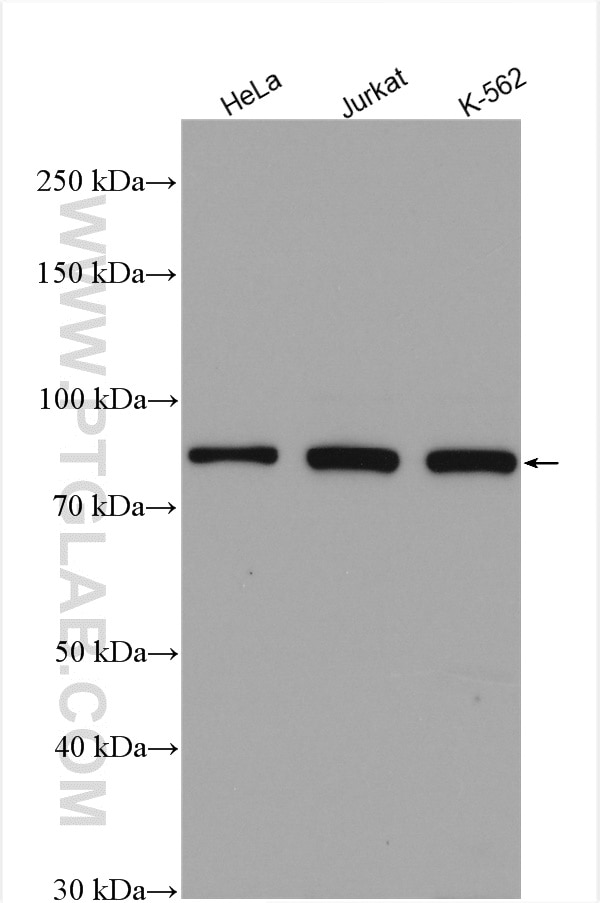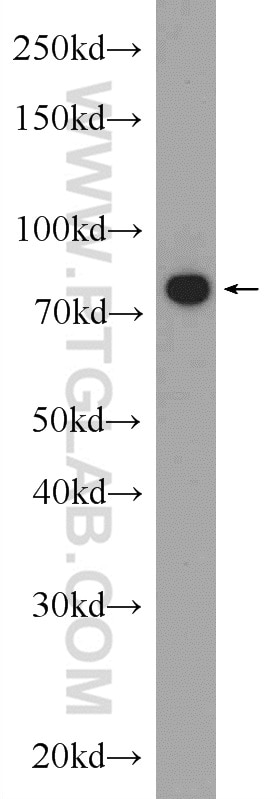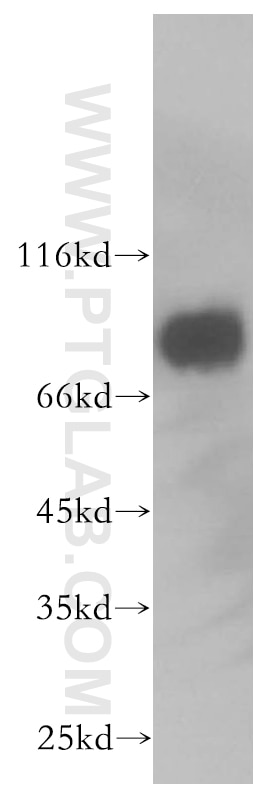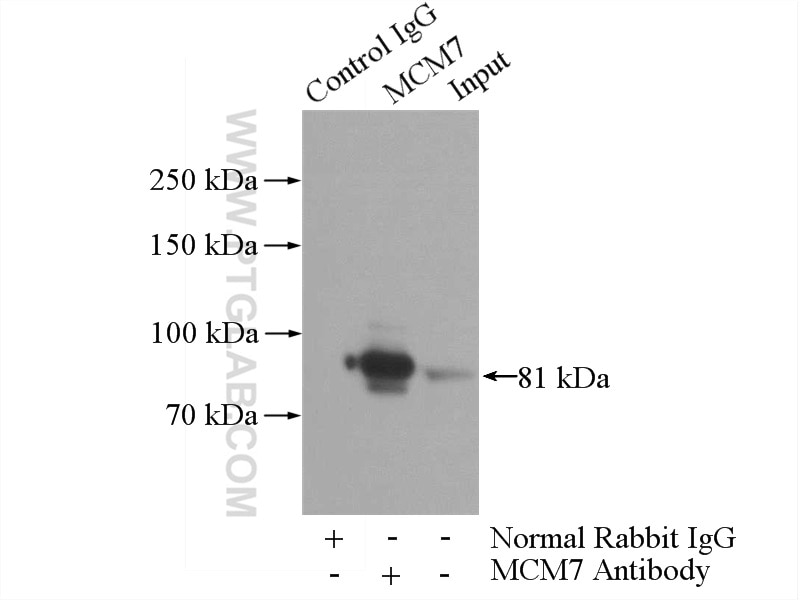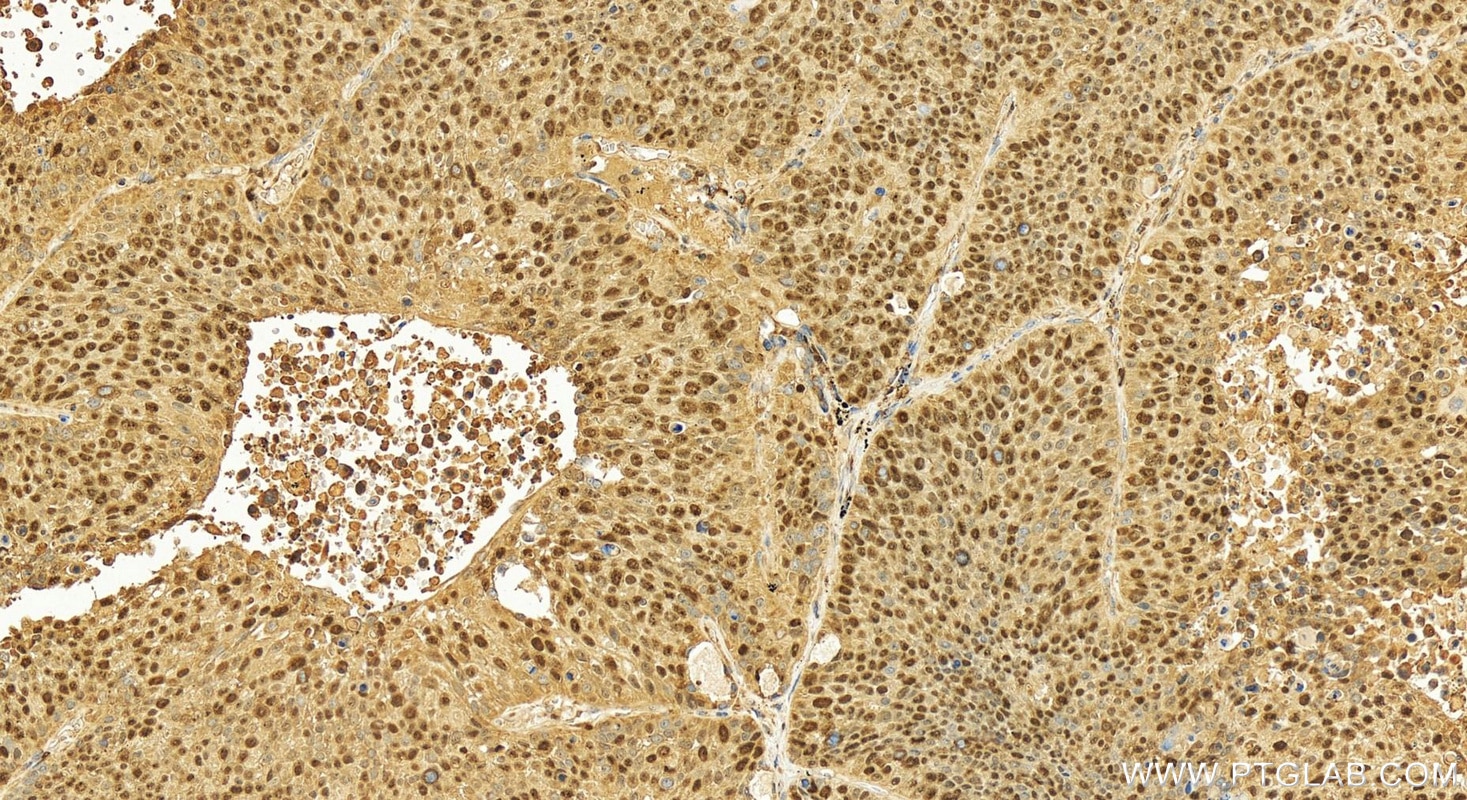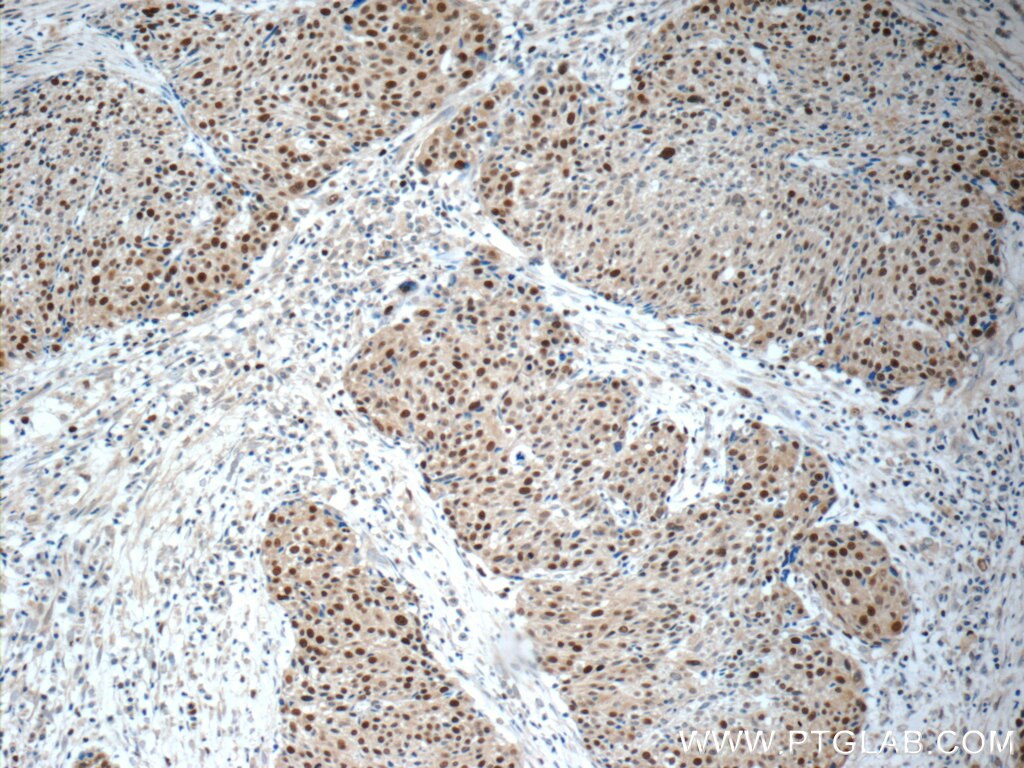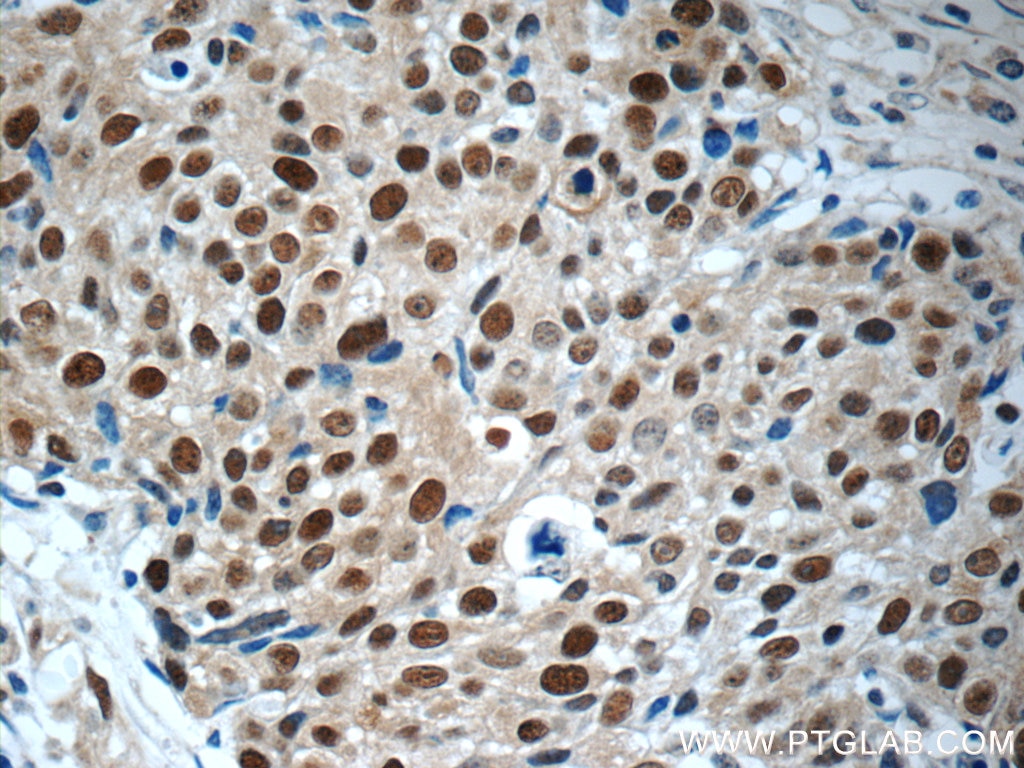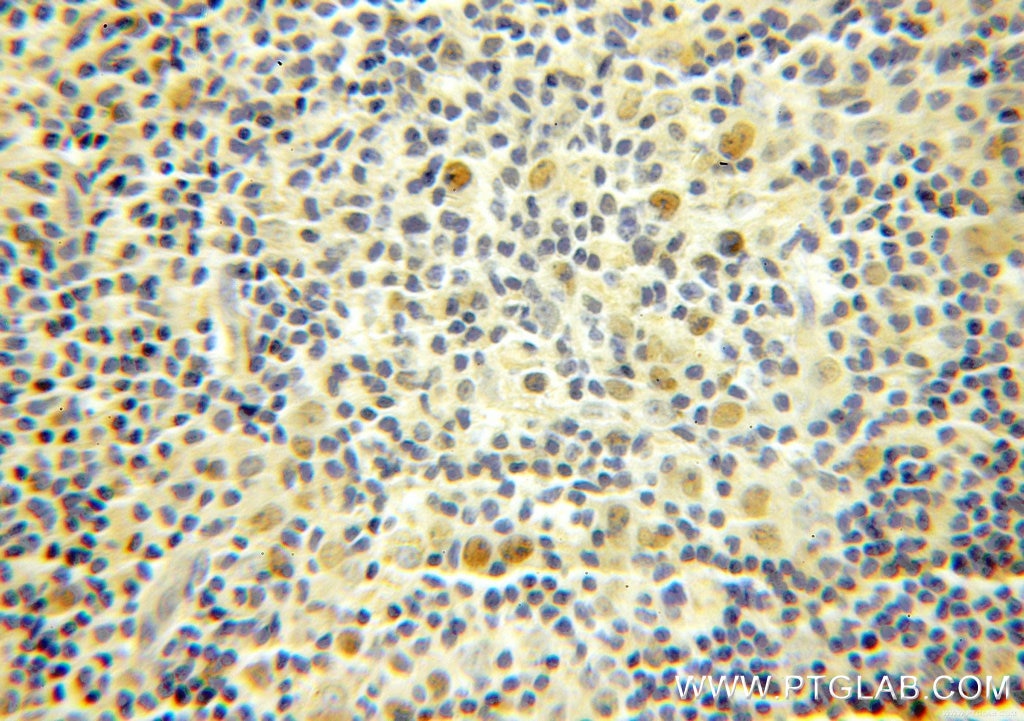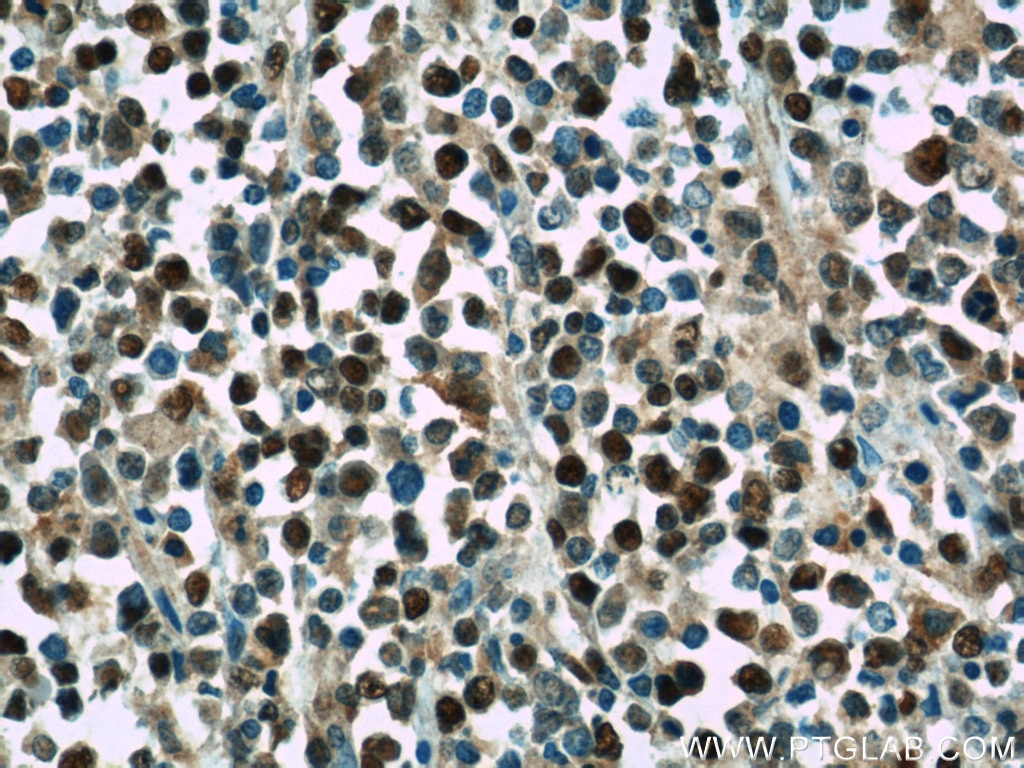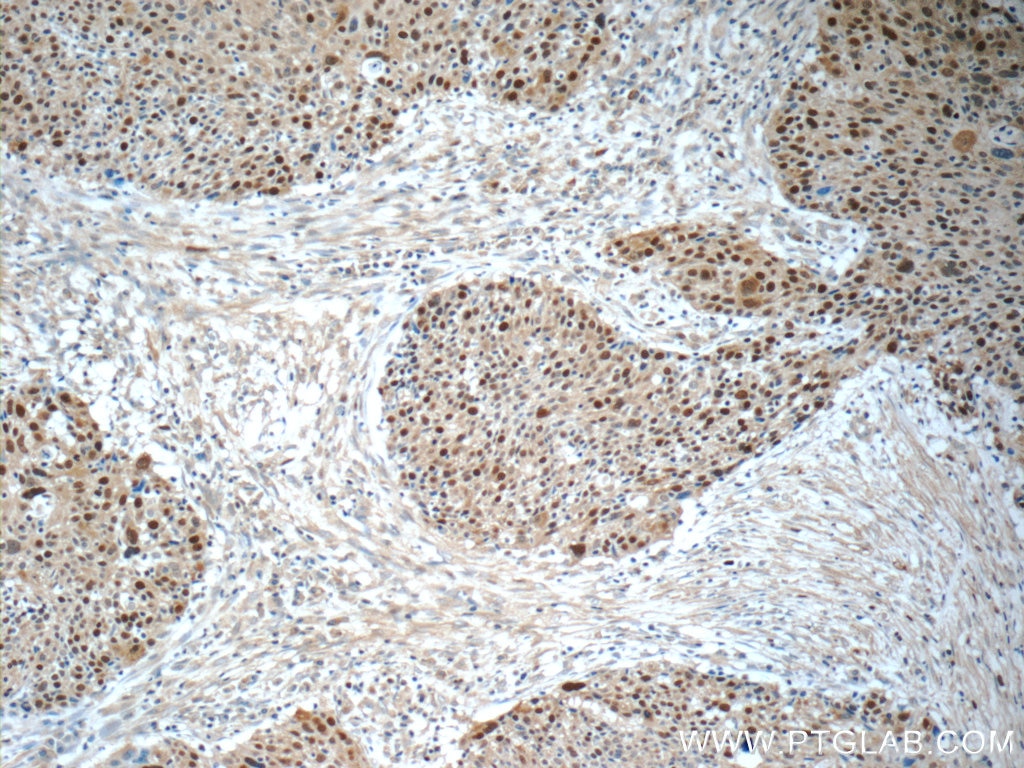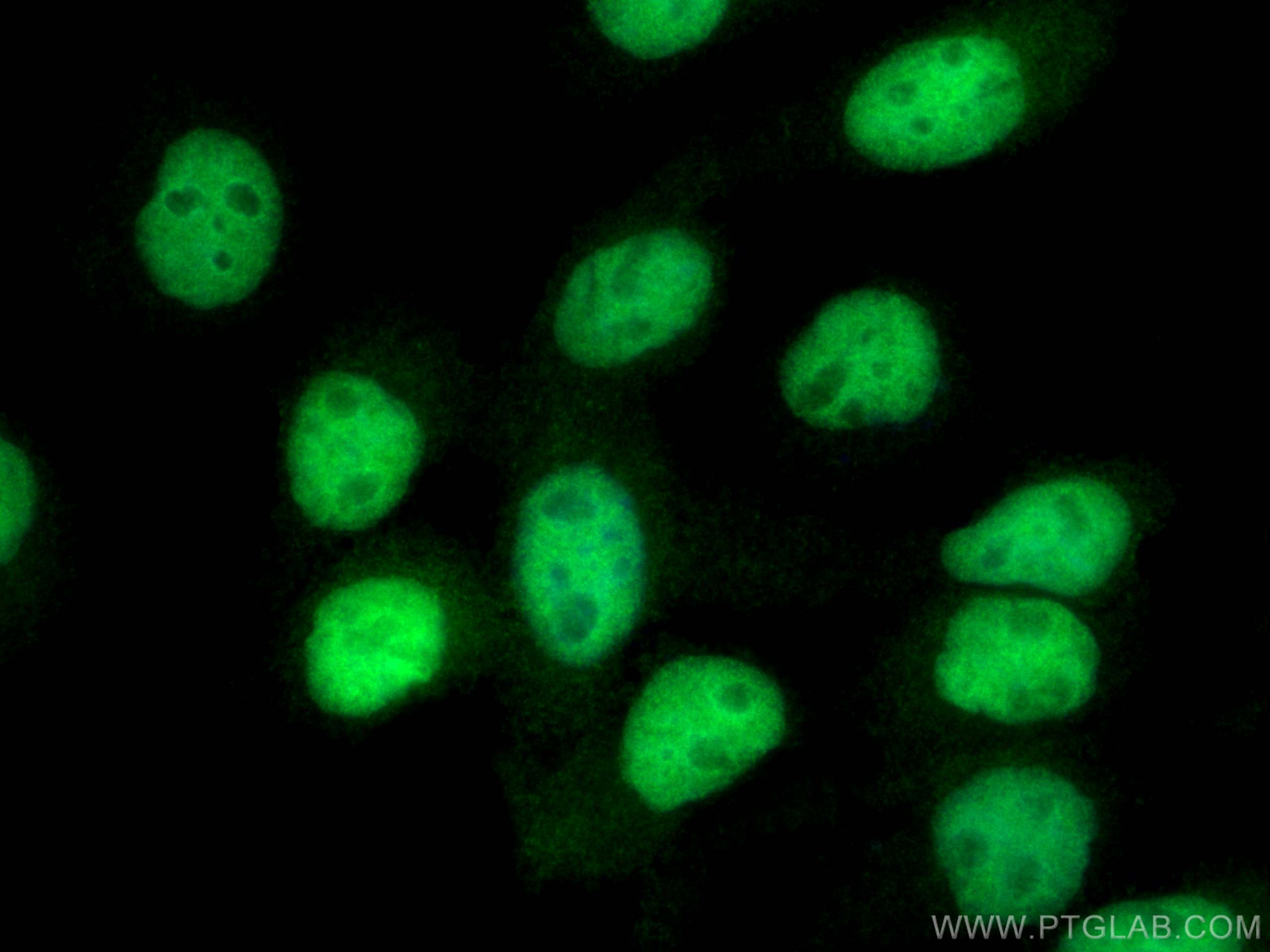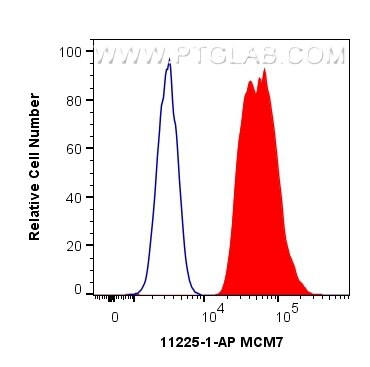Anticorps Polyclonal de lapin anti-MCM7
MCM7 Polyclonal Antibody for WB, IHC, IF/ICC, FC (Intra), IP, ELISA
Hôte / Isotype
Lapin / IgG
Réactivité testée
Humain, rat, souris
Applications
WB, IHC, IF/ICC, FC (Intra), IP, CoIP, ELISA
Conjugaison
Non conjugué
N° de cat : 11225-1-AP
Synonymes
Galerie de données de validation
Applications testées
| Résultats positifs en WB | cellules HeLa, cellules Jurkat, cellules K-562, cellules MCF-7, cellules NIH/3T3 |
| Résultats positifs en IP | cellules NIH/3T3 |
| Résultats positifs en IHC | human lung squamous cell carcinoma tissue, tissu de cancer du poumon humain, tissu de lymphome humain il est suggéré de démasquer l'antigène avec un tampon de TE buffer pH 9.0; (*) À défaut, 'le démasquage de l'antigène peut être 'effectué avec un tampon citrate pH 6,0. |
| Résultats positifs en IF/ICC | cellules A431, |
| Résultats positifs en FC (Intra) | cellules HepG2 |
Dilution recommandée
| Application | Dilution |
|---|---|
| Western Blot (WB) | WB : 1:5000-1:50000 |
| Immunoprécipitation (IP) | IP : 0.5-4.0 ug for 1.0-3.0 mg of total protein lysate |
| Immunohistochimie (IHC) | IHC : 1:200-1:800 |
| Immunofluorescence (IF)/ICC | IF/ICC : 1:50-1:500 |
| Flow Cytometry (FC) (INTRA) | FC (INTRA) : 0.40 ug per 10^6 cells in a 100 µl suspension |
| It is recommended that this reagent should be titrated in each testing system to obtain optimal results. | |
| Sample-dependent, check data in validation data gallery | |
Applications publiées
| KD/KO | See 2 publications below |
| WB | See 23 publications below |
| IHC | See 5 publications below |
| IF | See 1 publications below |
| CoIP | See 1 publications below |
Informations sur le produit
11225-1-AP cible MCM7 dans les applications de WB, IHC, IF/ICC, FC (Intra), IP, CoIP, ELISA et montre une réactivité avec des échantillons Humain, rat, souris
| Réactivité | Humain, rat, souris |
| Réactivité citée | Humain, souris |
| Hôte / Isotype | Lapin / IgG |
| Clonalité | Polyclonal |
| Type | Anticorps |
| Immunogène | MCM7 Protéine recombinante Ag1730 |
| Nom complet | minichromosome maintenance complex component 7 |
| Masse moléculaire calculée | 81 kDa |
| Poids moléculaire observé | 81 kDa |
| Numéro d’acquisition GenBank | BC013375 |
| Symbole du gène | MCM7 |
| Identification du gène (NCBI) | 4176 |
| Conjugaison | Non conjugué |
| Forme | Liquide |
| Méthode de purification | Purification par affinité contre l'antigène |
| Tampon de stockage | PBS with 0.02% sodium azide and 50% glycerol |
| Conditions de stockage | Stocker à -20°C. Stable pendant un an après l'expédition. L'aliquotage n'est pas nécessaire pour le stockage à -20oC Les 20ul contiennent 0,1% de BSA. |
Informations générales
MCM7, also named as CDC47 homolog or P1.1-MCM3, is a 719 amino acid protein, which belongs to the MCM family. MCM7 acts as component of the MCM2-7 complex (MCM complex) which is the putative replicative helicase essential for 'once per cell cycle' DNA replication initiation and elongation in eukaryotic cells. the MCM2-7 complex participates in the pre-replication complex formation and exhibits helicase activity which makes DNA unwind, and resulting in recruitment of DNA polymerases and initiation of DNA replication and elongation [PMID: 29463213 ]. An immunohistochemical study has shown that MCM7 is increased in HCC. Silencing of MCM7 with shRNA inhibits the malignant behavior of HCC cells via cell cycle arrest and apoptosis [[PMID: 29463213].
Protocole
| Product Specific Protocols | |
|---|---|
| WB protocol for MCM7 antibody 11225-1-AP | Download protocol |
| IHC protocol for MCM7 antibody 11225-1-AP | Download protocol |
| IF protocol for MCM7 antibody 11225-1-AP | Download protocol |
| IP protocol for MCM7 antibody 11225-1-AP | Download protocol |
| Standard Protocols | |
|---|---|
| Click here to view our Standard Protocols |
Publications
| Species | Application | Title |
|---|---|---|
Adv Sci (Weinh) Targeting CBX3 with a Dual BET/PLK1 Inhibitor Enhances the Antitumor Efficacy of CDK4/6 Inhibitors in Prostate Cancer | ||
Nucleic Acids Res DOCK7 protects against replication stress by promoting RPA stability on chromatin. | ||
Biomaterials Biocompatible PEGylated Gold nanorods function As cytokinesis inhibitors to suppress angiogenesis. | ||
Elife MCMBP promotes the assembly of the MCM2-7 hetero-hexamer to ensure robust DNA replication in human cells. | ||
J Nanobiotechnology Graphene quantum dots rescue angiogenic retinopathy via blocking STAT3/Periostin/ERK signaling. |
